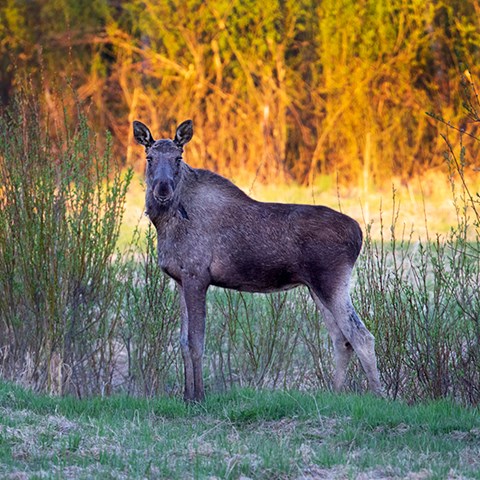Contact
Department of Wildlife, Fish and Environmental Studies

Scientists recently recorded the first observation of coprophagy (the eating of feces) in moose. The discovery was made in Norway, where five moose were fitted with camera collars to study the behavior and food choices of wild moose.
Researchers from the Swedish University of Agricultural Sciences (SLU) together with colleagues from the Norwegian Institute for Nature Research (NINA) have captured the first observation of a moose eating the feces of another moose. This behavior is called coprophagy and is common among some animals such as hares, but rare in deer.
The study itself was carried out over several months in two areas in Norway. There, the researchers fitted five moose with camera collars and collected more than 6,500 video sequences. Among other things, the footage showed that the moose spent about one third of the recorded time foraging, but coprophagy was observed only once.
– As far as we know, this is the first observation of coprophagy in moose. The recording shows a female moose ingesting moose dung pellets during May. At that time, fresh vegetation is still scare in the study area so perhaps the behavior was about increasing the intake of nutrients, but that is a speculation, says Robert Spitzer, researcher at SLU and lead author of the study.
More observations are needed to know how common coprophagy is in moose. The researchers are also interested in finding out more about the driving forces behind the behavior and the risks involved.
– Feces can contain both environmental pollutants and infectious agents and this can be a possible route of transmission of diseases to animals. Therefore, a better understanding of why and to what extent coprophagy occurs in wild moose can improve our understanding of disease transmission pathways, says Robert Spitzer.
Further study is required to determine if coprophagy is actually a causally driven behavior in moose or whether the observation corresponded to an isolated incident.
– Maybe this moose was simply curious or it was an unintended byproduct of foraging on the ground, says Robert Spitzer.
Robert Spitzer, Cecilia Åström, Annika Felton, Monica Eriksson, Erling L. Meisingset, Erling J. Solberg, Christer M. Rolandsen. Coprophagy in moose: A first observation. Ecology and Evolution. Volume 13, Issue 1, January 2023: https://doi.org/10.1002/ece3.9757